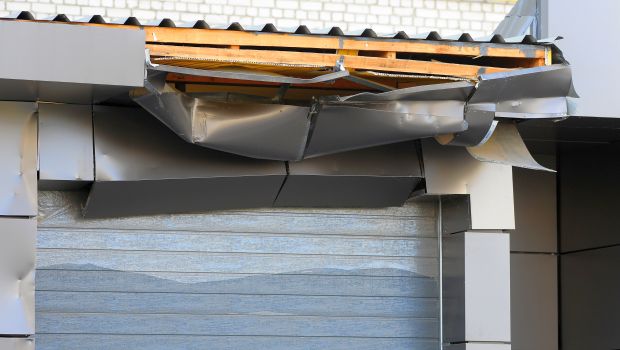Like any brick-and-mortar business, a self-storage facility is vulnerable to property damage. Whether unforeseen events are caused by natural or man-made forces, it’s important your business is protected through a quality insurance policy.
July 29, 2017

By Lauren Nicholson
Like any brick-and-mortar business, a self-storage facility is vulnerable to property damage. Whether unforeseen events are caused by natural or man-made forces, it’s important your business is protected through a quality insurance policy.
Commercial-property insurance coverage protects your owned property and everything contained within. Most policies will cover you on a “replacement-cost” basis up to a stated limit. This includes the building contents such as office furniture and equipment, computers, security monitors, and retail inventory. Replacement-cost coverage is preferred because it doesn’t factor in depreciation over time. If there’s a claim, the policy would reimburse you for the cost to replace the building or items at today’s cost.
Additional coverages that should be listed on the property portion of your business insurance policy are equipment breakdown and utility services. Equipment breakdown is designed to protect you against damages resulting from the electrical or mechanical breakdown of owned systems or equipment. It’s essential, especially if your facility has a climate-control or sprinkler system, or a boiler.
Coverage for utility services is also vital, particularly if your facility is in a severe weather region. Note: There are limits on the circumstances in which insurance will pay for loss due to power outage, so you must have coverage for off-premises power failure.
Business Interruption
If you experience a tangible property loss, your self-storage facility may be affected in other ways. For example, damage to a main building could cause a full or partial closure of the business. For this reason, it’s imperative to have business-income or business-interruption insurance. The coverage should be at sufficient limits in accordance with your gross revenue, so you’re covered for the cost to relocate the office if necessary and operate the business as usual. It’s vital for employee remuneration and to receive reimbursement for lost revenue during the inoperable period.
This coverage typically has a maximum timeframe, such as 12 months, as well as a set time deductible. For example, it may not kick in until 72 hours have passed.
If this coverage is listed on your policy as “ALS” (actual loss sustained), you have the most comprehensive coverage, since it’s not based on an established limit. Rather, it’s designed to indemnify you for the actual lost revenue resulting from the claim.
Prevention Is Key
Identifying potential hazards before a tangible property loss occurs is key to prevention. Here are some of the most common causes of building-damage claims and how to avoid them:
Electrical fires. Inspect facility wiring seasonally. Keep an eye out for any wear and tear, especially chewing by animals that might have entered the premises. Have an electrician conduct a walk-through of each building during normal business hours to ensure all is satisfactory at normal electricity-usage levels.
Fire-safety equipment should also be placed on a regular inspection-service agreement. Fire alarms should be connected to a central station and battery backup. At day’s end, unplug any office appliances that don’t need to be on overnight.
Burglary, theft, vandalism and arson. Recommended safeguards for mitigating these types of claims include a quality perimeter fence and a comprehensive video-surveillance system. Cameras should cover all key areas of the property including the parking area and facility entrance. Lighting is another great deterrent.
Display advisory signs about your security measures to discourage trespassers. In addition, consider a burglar alarm that will automatically notify authorities if a security breach occurs. There are several companies that offer monitoring services for a monthly or annual fee.
Weather. Mother Nature is a force to be reckoned with, and we can’t stop her. However, there are steps you can take to minimize potential building damage.
First, ensure your roof is impact-resistant and coated, so damage from hail is kept to a minimum. Have a certified roofing contractor write an analysis for the best design if you’re in a hail-prone zone. If your facility is in a region where high winds are common, be aware of any roof areas that are lifting so you can repair them before a storm potentially tears off a greater portion. Also, trim any overhanging limbs and scope the land for any dead trees that could easily come down in high winds and damage your buildings.
If a property-damage incident occurs at your site, report it to your insurance agent immediately. If possible, take photos of the impairment. Record the date and time of the incident, and note any parties that may have been involved. Finally, keep your agent in the loop if anything changes. The sooner you file a claim, the quicker an adjuster can be assigned and settlements can be made to reimburse you for damages.
Lauren Nicholson is an account executive with Storage Insurance Brokers, which offers an insurance program designed specifically for the unique needs of the self-storage industry. Based in the company’s Brewster, N.Y., office, she’s licensed to sell accident, commercial, health and life insurance. For more information, call 866.793.9999; visit www.storageinsurancebrokers.com.
You May Also Like





